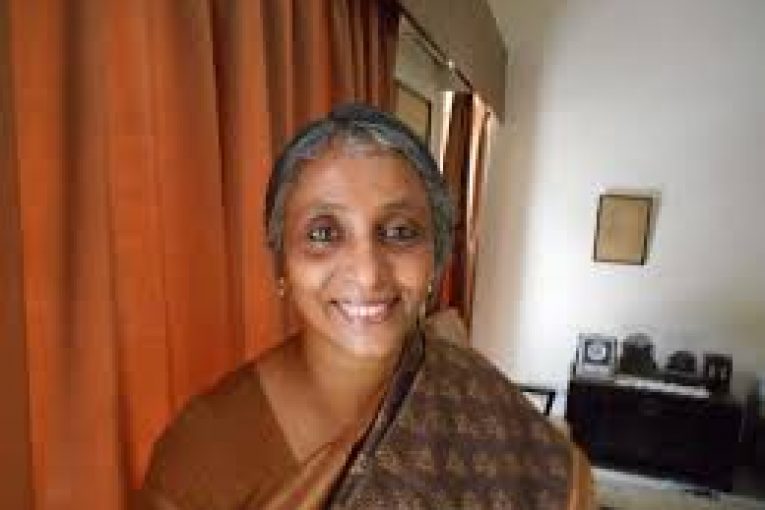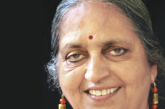
With a home of our own at 5, Windsor Place, it was time to acquire an identity of our own. Who were we, anyway? Nobodies, really, without the words that we had strung together – as reporters, commentators, analysts, in variegated publications and in various languages.
That’s when somebody came up with a eureka moment: let’s collate the work of women journalists said that unremembered Archimedes. Everybody nodded. The rest is history and a brave volume bearing on its cover an Arpita Singh painting and entitled, ‘Between Bylines: Women Journalists Report On Their Times’. Remember, this was 14 years ago, when DD had a stranglehold on “prime time” – such as it was – and today’s formidable women television journalists were still bunking college lectures. Print ruled the media space. So the venture seemed representative enough, although it was decided that more ambitious plans to rope in work in regional languages would have to wait and that only English and Hindi journalism would be showcased.
As the words poured in – in the form of handwritten notes, on dog-eared sheets of paper, as photocopies and yellowing clippings – it became clear there was something substantive here. As Mrinal Pande, then president of the IWPC, wrote in her preface, “We present here a first sampling of the myriad world of journalistic writing of women scribes.” ‘Sampling’ was right. The volume could not claim to be comprehensive, either in terms of contributors or subject matter, dominated as it was by the English language and Delhi heavies, and spanning as it did a vast, inchoate space ranging from reminiscences and political reportage to gender and humour.
There was Neerja Chowdhury capturing the mystique of a still-very-much-in-the-closet Sonia Gandhi in a piece written in January 1995 – almost a decade before the famed renunciation of 2004. Wrote Neerja: “At the moment she is more likely to position herself in such a way so that she can be the power behind the throne.” A few pages later, there was Tavleen Singh taking a potshot at Sonia’s ma-in-law to mark the 10th anniversary of Indira Gandhi’s assassination: “She gave us the Emergency, press censorship (both overt and covert), state-controlled television …and dynastic succession. Which of these things should a ‘grateful nation’ remember her for?”
Chitra Subramaniam’s investigation into Bofors found an echo in the volume, datelined Geneva and frontpaged on July 21, 1993: “The Swiss federal court has upheld charges of corruption, forgery and embezzlement among others, in the Bofors-India Howitzer deal…” it read. Today the Ambani vs Ambani face-off may fill the news space, but in September 1994 Sushma Ramachandran was commenting on the Singh vs Singh vs Singh battle within the Bhai Mohan Singh group. Plus ca change, plus c’est la meme chose, and all that.
Face-to-face was big. Latinos, for some reason, seemed to be the main flavour among the interviews represented. Kamala Mankekar, in a piece going back all the way to 1960, wrote about asking Che Guevera – chi, the very same of the iconic star-on-beret image – how old he was. The smiling, long-haired physician, who was in Delhi representing the newly installed Castro government, smiled, “Oh, it does not matter – not to me – I am no senorita.” Revolutionaries were no feminists in those days clearly! He was 31. Madhu Jain, recalling her encounters with Federico Fellini in an obit on the filmmaker, quotes him as saying, “One has power over people, sets, colour…(I can) make it better than God did.” Wonder what God thought of that. Then there was Ottavio Quattrocchi, India’s most famous fugitive from justice. It was July 1993. After playing hard-to-get, Manjula Lal was finally escorted into his Golf Links office. The man offered her coffee and talked about everything, including the fact that his father worked for a company that had brought chloromycetin to India, but nary a word about Snamprogetti’s involvement in an ever-ballooning scam. When she persisted, he went all Latino – “Oh, this lady with the beautiful smile will get me into a lot of trouble, he says. Perhaps when I come back from Italy, we can have another cup of coffee…” Famous last words.That was the last seen of Mr Q on Indian soil.
Many of these pieces have quiet insights. Like Sumita’s comment on how the word “sheel” (modesty) used frequently to describe women is symbolic of society’s hypocrisy, Geeta Shree’s exposition of rape within the family, or Rajni Bakshi’s argument in the bitter aftermath of the Babri Masjid demolition that a genuine debate on Swami Vivekananda may help Indians understand themselves better. There is also evidence of an alert eye and a keen ear. Ritambara Shashtri’s report of July 1982 was perhaps the first on the lucrative business called female foeticide. And Saroj Nagi, writing for the now defunct Illustrated Weekly, captured the BJP’s new muscular argot: “In the BJP headquarters, there is a notice exhorting the caller not to say ‘hello’ into the phone. ‘Say Jai Sri Ram’, it commands.”
This is a small treasury of pieces by over a hundred media women, many of whom – like Amita Malik – have passed on and will no longer visit 5, Windsor Place. But among its most valuable contributions are those that recalled an earlier era when women were making their first forays into Indian journalism. Usha Rai recalled how when she was expecting her first baby and wanted to take maternity leave she was told “the rule books had to be consulted for the TOI had no tradition of maternity leave”.
But things had to change, a change Razia Ismail captured in a comment she wrote for this volume, “Our early years in the Delhi newspaper arena was a period which we can now recognize as a turning point for women as straight newsperson. The day came when we did not find only “flower show” or…“find out what Mrs Gandhi is wearing” against our names on the assignment sheet. The day came when ‘ladies’ covered hard news and even got to be special correspondents with ministry beats…”
Time passes. And with it words set in printer’s ink. For last year’s words belong to last year’s language/And next year’s words await another voice…




